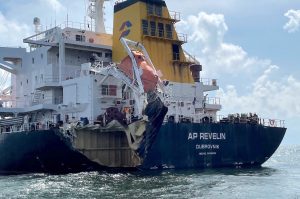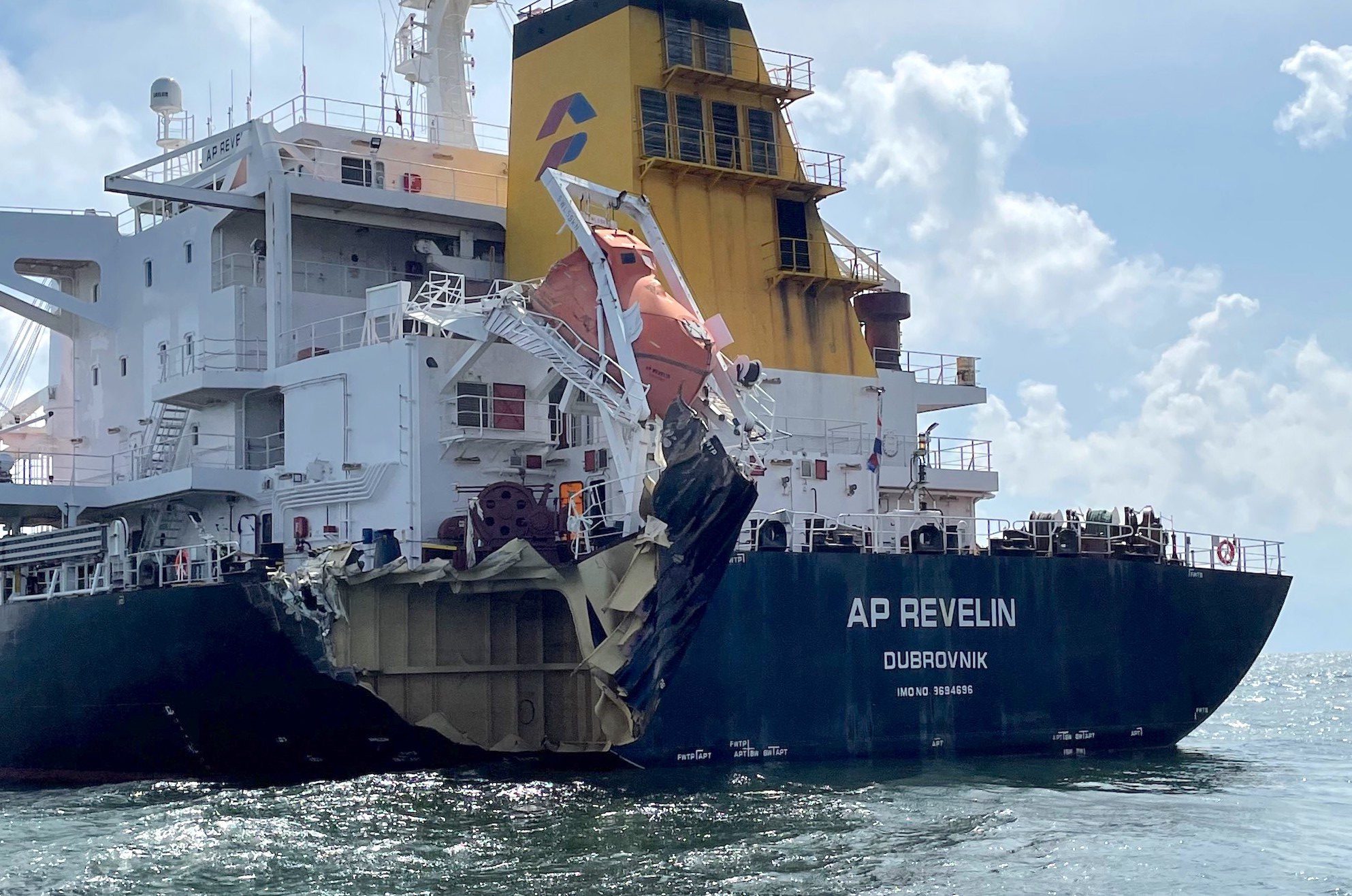Propulsion loss on ships, characterized by unexpected failure or reduction in the ship’s manoeuvrability due to propulsion system issues, presents significant challenges to maritime operations. This guide highlights the complexity and severity of propulsion loss in maritime operations. It emphasizes that propulsion loss, characterized by unexpected failures in the ship’s manoeuvrability due to propulsion system issues, is a critical challenge in maritime operations. It aims to provide a comprehensive understanding of the causes, consequences, and effective management strategies for propulsion loss, incorporating insights and practical advice for marine engineers and ship owners.

Causes of Propulsion Loss
Propulsion loss on ships, a critical maritime challenge, arises from various factors that compromise the vessel’s ability to maneuver effectively. This guide delves into the primary causes of propulsion loss, including mechanical and equipment failures, fuel and lubrication issues, human error, electrical and control system failures, steering and rudder system failures, and environmental factors. Understanding these causes is essential for preventing unexpected failures and ensuring the operational integrity of ships.
- Mechanical and Equipment Failures: Mechanical failures are a leading cause of propulsion loss. These failures can range from main engine issues to problems with auxiliary systems like generators. Regular inspection and maintenance of all mechanical components are crucial to prevent such failures.
- Fuel and Lubrication Issues: Contaminated fuel, improper fuel management, and inadequate lubrication can significantly impact propulsion systems. Ensuring fuel quality, regularly draining water from fuel tanks to prevent microbial infestation, and adhering to correct fuel changeover procedures are vital steps to mitigate these risks.
- Electrical and Control System Failures: Blackouts and failures in control equipment can cause propulsion loss. Load-shedding arrangements should be in place to protect generators against overload. Ensuring the correct maintenance of electrical systems, including Automatic Voltage Regulators (AVR) and generators, is essential.
- Steering and Rudder System Failures: Failures in the steering gear or rudder system can directly impact a ship’s ability to maintain course, even if propulsion is intact. Common issues include hydraulic system malfunctions, loss of power to steering motors, or physical damage to the rudder. Regular inspection, hydraulic fluid checks, and testing of steering systems are essential to ensure they respond accurately to helm commands.
- Human Error: Operational mistakes and a lack of proper training can lead to propulsion loss. Crew training should include familiarization with engine room systems, emergency procedures, and changeover processes. Crews should also be trained to manually operate load share and manage generators effectively.
- Environmental Factors: Operating in extreme weather conditions requires additional precautions. The crew should be aware of the limitations of the ship’s propulsion and steering systems in such environments and take necessary measures to ensure safety.
By understanding these causes, maritime professionals can take preventive actions to reduce the likelihood of propulsion and steering-related incidents, ensuring safer and more reliable vessel operations.
Consequences of Propulsion Loss
The loss of propulsion in maritime vessels can lead to significant navigational and safety risks, substantial economic impacts, and potential environmental damage. This section explores how propulsion loss poses imminent threats to ships, particularly in confined or challenging operational situations, and the broader implications of such incidents for the maritime industry. The consequences of propulsion loss underscore the need for robust management and preventive strategies to safeguard vessels, their crew, and the environment.
- Navigational and Safety Risks: Propulsion loss is a major accident hazard, especially for passenger ships, as it can lead to immediate loss of propulsion and steering. This poses imminent threats to the ship and its occupants, depending on the operational situation. For instance, incidents in confined waterways or during port manoeuvres, particularly in severe weather conditions, have a higher severity potential compared to incidents in the open sea.
- Economic Impact: The economic impact of propulsion loss is considerable. Machinery damage accounts for a significant percentage of all passenger ship casualties, leading to financial losses, delays in delivery times, and threats to the safety of people onboard. Major incidents can negatively affect a shipping company’s reputation, with consequences like impacting earnings and profit.
- Environmental Damage: Propulsion loss near sensitive marine areas can result in ecological harm, particularly in the event of accidents involving spills. The risk of propulsion loss increases in extreme weather conditions and when navigating in sensitive environmental areas. As the maritime industry transitions to cleaner energy carriers and more efficient systems, the complexity of these integrated systems can challenge our understanding and management of the risks involved.
Preventive Actions
Effective management of propulsion loss entails a comprehensive set of preventive and corrective actions. This guide outlines key strategies, including engine isolation and failure procedures, emergency generator testing, regular maintenance, fuel quality management, crew training, technological solutions, adherence to safety protocols, and effective communication and coordination. Implementing these measures helps mitigate the risks associated with propulsion loss and enhances the overall safety and reliability of maritime operations.
1. Technical and Procedural Measures
- Engine Isolation and Failure Procedures: Training engineers on cylinder isolation and establishing ‘failure to start’ procedures, along with blackout checklists.
- Emergency Generator Testing and Power Management: Weekly testing of emergency generators and running multiple generators in parallel during maneuvering.
- Regular and Thorough Maintenance: Routine maintenance of engines, fuel systems, electrical components, and control systems.
- Fuel Quality Management: Ensuring high fuel quality by draining water from fuel tanks to prevent contamination.
- Electrical Power Management: Implementing load shedding and ensuring adequate power capacity for heavy equipment.
- Emergency Generator Readiness: Monthly operation of the emergency generator at near maximum capacity for at least one hour.
2. Crew Preparedness and Training
- Crew Training and Drills: Regular training on propulsion control and blackout recovery, including drills on engine room systems, changeover, and emergency response.
- Effective Communication and Coordination: Continuous communication between the bridge and engine room to facilitate decision-making during emergencies.
3. Technological and Monitoring Solutions
- Technological Solutions and Monitoring: Use of advanced monitoring systems for early detection of issues, along with checking system alarms and control system accuracy.
4. Safety and Regulatory Compliance
- Adherence to Safety Procedures and ISM Code Compliance: Ensuring compliance with the International Safety Management (ISM) Code by implementing a structured Safety Management System (SMS). This system provides a framework for safe operation and pollution prevention, emphasizing the continuous improvement of safety management skills and practices across all shipboard operations.Establishing clear documentation and operational procedures within the SMS, which includes regular reviews, updates, and drills. This ensures that all crew members are aware of their roles, responsibilities, and actions in
- Compliance with IMO and SOLAS Regulations: Following International Maritime Organization (IMO) standards and the International Convention for the Safety of Life at Sea (SOLAS) regulations, which set the technical standards for emergency preparedness, including blackout prevention and propulsion recovery procedures.
- Enhanced Redundancy Measures: Going beyond minimum regulatory requirements by adopting additional safety notations and measures, such as Redundant Propulsion (RP) and Dynamic Positioning (DYNPOS) systems, to improve vessel reliability and operational flexibility in case of propulsion system failure.
Each category emphasizes a different aspect of preventive action, from technical measures and training to monitoring and compliance with regulations, ensuring a holistic approach to mitigating propulsion loss risks.
Corrective Actions Post-incident
Corrective actions post-incident can include accurately recording the position and time in logbooks, conducting root cause analyses, and implementing corrective actions to prevent recurrence, which is crucial following an incident. Using emergency procedures, such as dropping anchors, can effectively manage the situation during propulsion loss.
Real Cases of Propulsion Loss on Ships
| Name of Ship | Type of Ship | Year of Accident | Cause of Accident | Consequences |
| Costa Concordia | Cruise Ship | 2012 | Human error leading to a propulsion system failure | Capsizing and significant loss of life; environmental damage |
| Wakashio | Bulk Carrier | 2020 | Engine failure due to grounding | Oil spill; extensive environmental damage |
| MSC Opera | Cruise Ship | 2019 | Electrical and propulsion system failure | Collision with dock; operational delays |
| Norwegian Epic | Cruise Ship | 2019 | Power failure affecting propulsion | Loss of maneuverability; passenger disruption |
| Ever Given | Container Ship | 2021 | Mechanical and steering system failure | Blocked Suez Canal; global trade disruption |


nice. thank you.